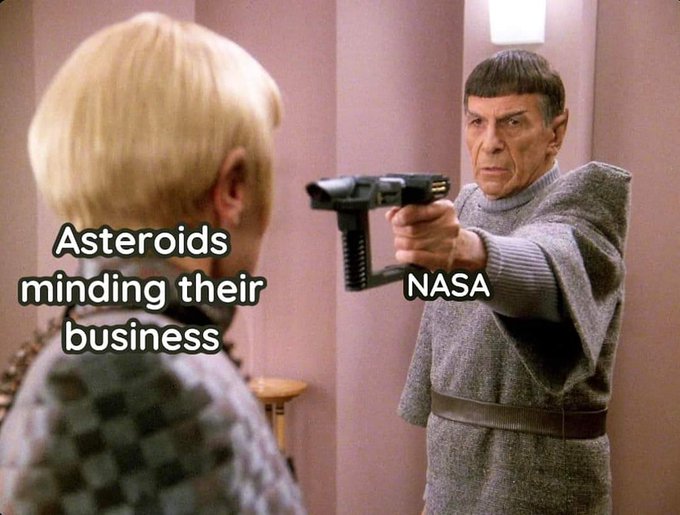
Image: CTIO/NOIRLab/SOAR/NSF/AURA/T. Kareta (Lowell Observatory), M. Knight (US Naval Academy) Image processing: T.A. Rector (University of Alaska Anchorage/NSF’s NOIRLab), M. Zamani & D. de Martin (NSF’s NOIRLab)
Posted on 10/03/2022 6:43:39 PM PDT by BenLurkin
NASA’s DART spacecraft intentionally crashed into Dimorphos, a petite moonlet orbiting the larger asteroid Didymos. Now, a telescope on the ground in Chile has imaged the massive plume created by the impact in the days following the encounter.
NASA is still sifting through the data of the collision to determine if the Double Asteroid Redirection Test, or DART, altered Dimorphos’s orbital trajectory around its larger companion...
The expanding dust trail from the collision is clearly visible, stretching to the right corner of the image. According to a NOIRLab release, the debris trail stretches about 6000 miles (10,000 kilometers) from the point of impact.
NASA scientists have yet to come out with their determination on DART’s success...exactly how much material from Didymos was expelled, how pulverized the material was, and how fast it may have been kicked up.
(Excerpt) Read more at gizmodo.com ...

On the Lars Larsson show he had a guest on talking about near Earth asteroids. Lars asked him if a solar sail could be used to capture and carry away a threatening asteroid. The man said yes.
No debris field in that case.
The experts always told us it would be better to have one big rock hit us than a million smaller ones.
Dimorphos Meteor showers next year?
The little ones can burn up as they descend through the atmosphere. The big ones just get hotter and gain energy for impact.
The Dimorpheans are very upset, have appealed to the Intergalactic Security Council, warning “two can play that game”. Earthlings beware!
“It’s not nice to fool with Mother Nature!”
Love it!
I’m not surprised that there is a debris field. As the spacecraft was getting closer, it was easy to see that the asteroid seemed to have a somewhat loose composition, almost like a giant ball of gravel.
They don't actually "gain energy."
Rather, as they fall, they transform potential energy into kinetic energy.
Regards,

“The experts always told us it would be better to have one big rock hit us than a million smaller ones”
I’d not heard that before but I’d rather be hit by 10 pounds of gravel than a 10 pound boulder.
If either is traveling at 10K mph it probably doesn't make much difference in space. You're either instant Swiss cheese or instant soup. If there's a nice blanket of atmosphere to burn through before it hits you, then definitely the gravel is the better option.
“If there’s a nice blanket of atmosphere to burn through before it hits you, then definitely the gravel is the better option. “
Good point. Your first point is also good.
Your first point suggests the boulder is the better choice because it, as compared with a spray of gravel, has less chance of hitting you.
Disclaimer: Opinions posted on Free Republic are those of the individual posters and do not necessarily represent the opinion of Free Republic or its management. All materials posted herein are protected by copyright law and the exemption for fair use of copyrighted works.